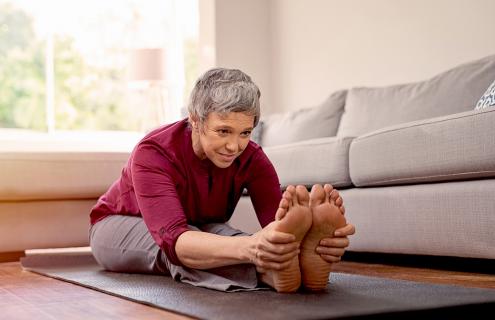
Regular stretching can be great for your body and mind, and many think of stretching with exercise. It can be used to increase your flexibility and performance in physical activities. It can also increase blood flow to your muscles, which can shorten your recovery time and reduce muscle soreness.
However, stretching can also help you relax and reduce pain to help you fall and stay asleep more easily.
Reduce stress
Most people’s muscles tend to tighten up when they experience physical and emotional stress. Stretch areas of your body where you tend to hold stress, like your neck, shoulders, and upper back to relieve that tension.
Here are some neck, back and shoulder stretches from Healthline.
Calm your mind
Stretching regularly as part of your daily routine can also calm your mind. Much like yoga, stretching while focusing on mindfulness or meditation exercises like breathing can give your mind a break and lower your blood pressure.
A deep breathing exercise you can practice regularly along with your stretches to calm your mind is 4-7-8 breath. Stick to only 4 rounds of this breath at one time. This offers the best results when you and practice it at least twice a day for four weeks or more. Set yourself a reminder each evening and use it whenever you feel stressed throughout your day.
- Exhale through your mouth, making a “whoosh” sound.
- Inhale through your nose quietly to the count of 4.
- Hold your breath gently to the count of 7.
- Exhale audibly through the mouth (more “whooshing”) to the count of 8.
Here are some good stretches for sleep from AARP.
Related Event: Each spring and fall, Catherine Sickles, LCMHD offers a series of free monthly workshops designed to help you sleep better. Find upcoming workshops in our event calendar.
Sources
https://www.ncbi.nlm.nih.gov/pmc/articles/PMC3679769/
https://www.aarp.org/health/healthy-living/info-2019/insomnia.html